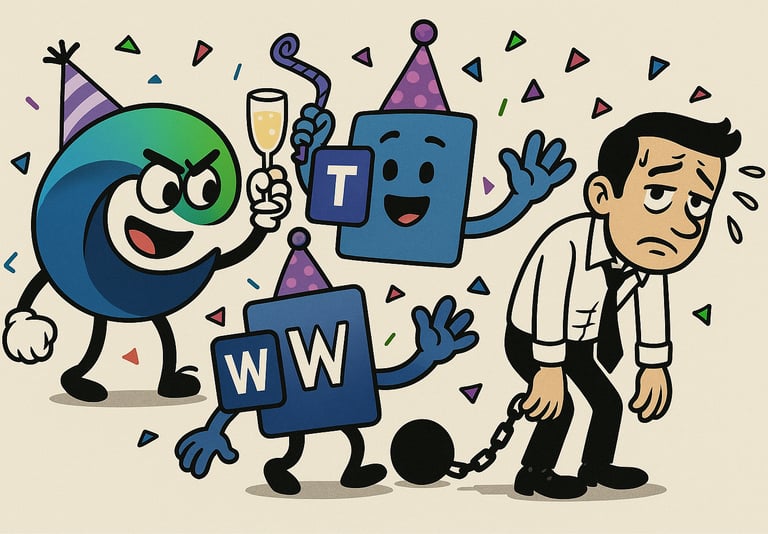Is Edge that bad?
Let’s talk about Edge for a minute. Okay, I know what you’re thinking: Edge is just another source of disappointment, like all its predecessors, and the only time it's useful is to download Chrome. But you know what? I might just change your mind.
4/24/20252 min read
What's up with Edge?
One of my recent clients was running a classic Windows-only infrastructure, and I forced myself to use Edge throughout the mandate. Here’s what I learned.
Edge has trust issues
Yup, you read that right. Edge will do everything it can to lock you in. Personally, this was the biggest issue. It asks twice before letting you change the default browser or search engine, and it even tries to trick you into thinking you're on Google. Seriously — search “Google” in the address bar and you’ll land on a Bing page dressed up like Google. No joke.
“Interesting” default settings
Microsoft really needs to understand: we don’t want Bing. But that’s not the worst of it.
What drove me crazy was that Alt + Tab switched between tabs, not windows. If you're like me and have a thousand tabs open, this becomes unbearable real fast. The worst part? The setting to change this isn’t in Edge’s settings — it’s hidden in the Windows system settings. Like... why?
Missing modern features
Edge is still missing some of the modern features we’ve come to love — proper tab grouping, a wide variety of extensions, or genuinely useful AI integrations. Some of us are attached to those, and it feels like Edge is lagging behind.
So why am I recommending it?
Work.
In a Windows environment, Edge is incredibly well integrated. It just works. It feels like your Word or Excel documents are part of the OS. Everything flows — a Teams extension will pop up while you browse, and if your company uses SSO, the synchronization is smooth as butter.
Final thoughts
I would never use Edge as my primary browser. But with a few tweaks and in the right context — specifically, a work-only setup — it’s actually a powerful tool.






My post content
